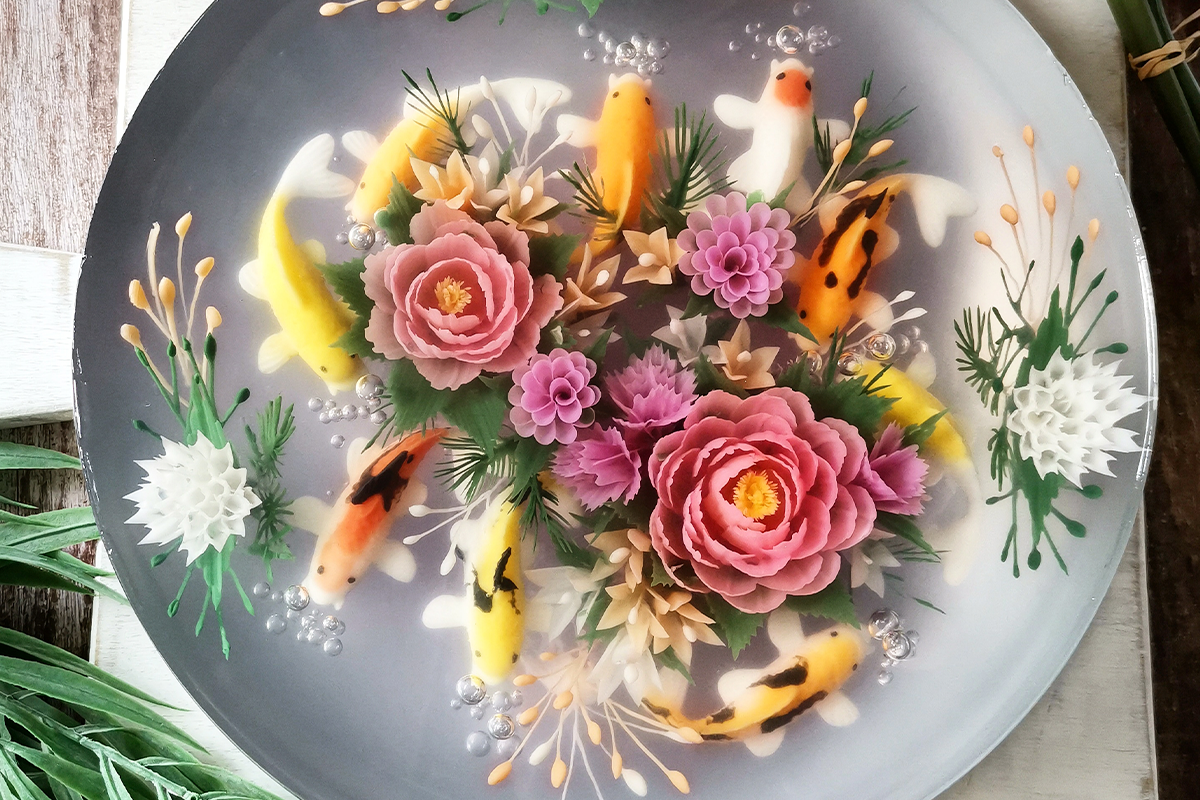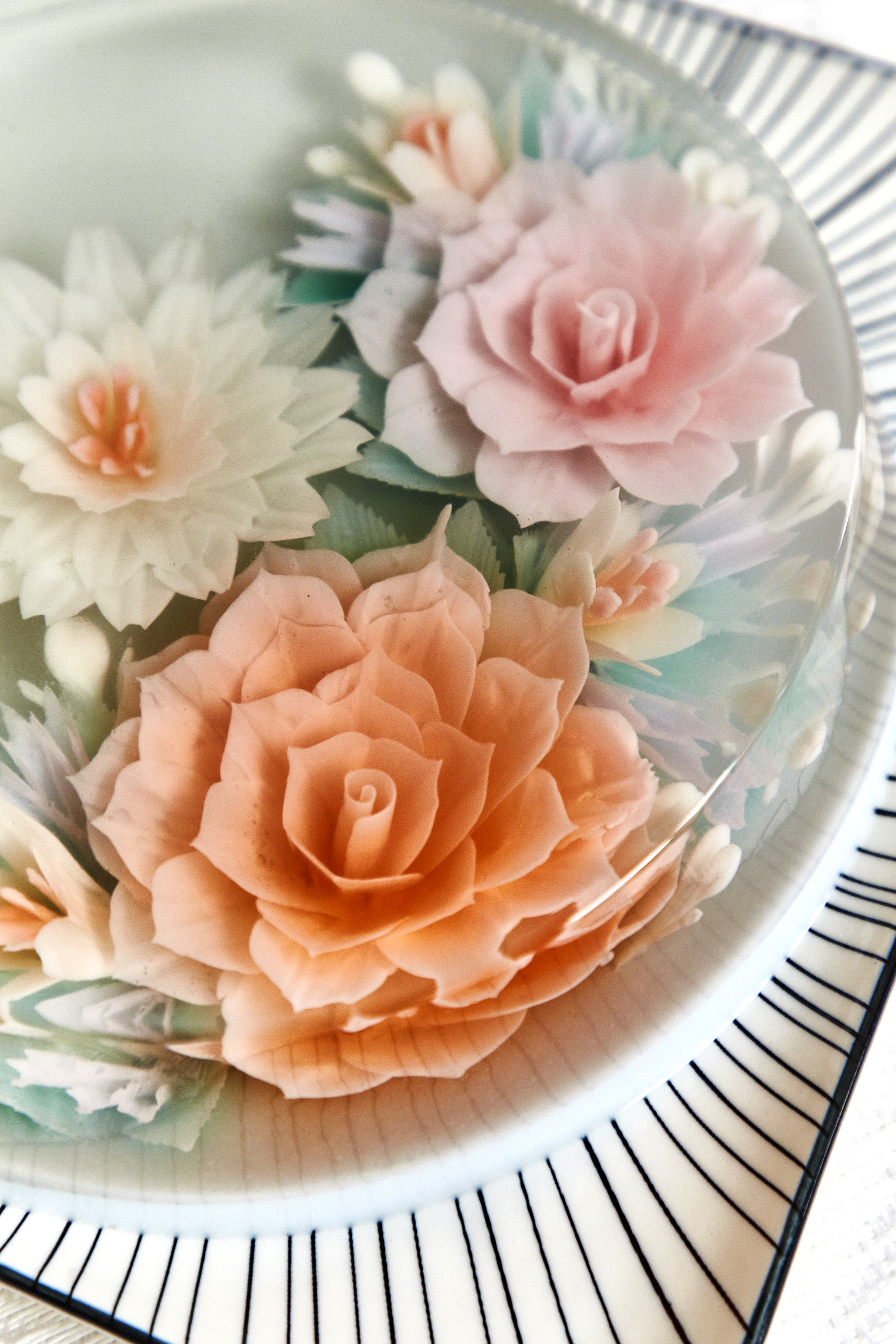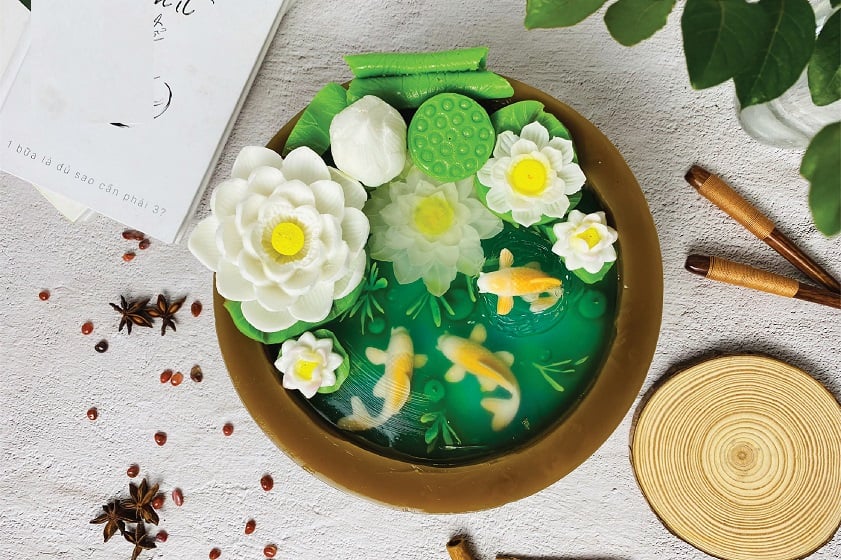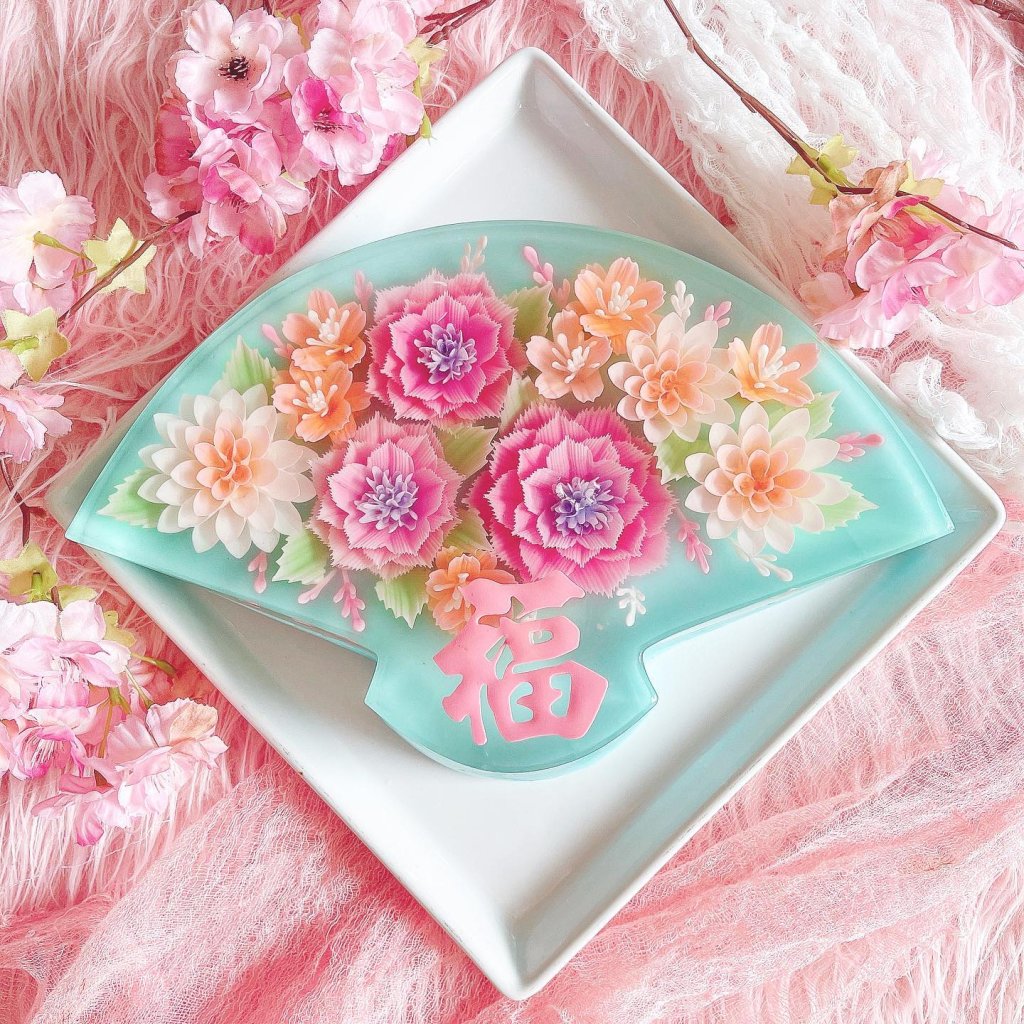Vietnamese jelly cake is more than just a dessert; it is a genuine work of art. The intricate craftsmanship and delicious flavors have made the jelly cake a delightful masterpiece that both pleases the eyes and satisfies the taste buds.
During your Vietnam travel journey, besides visiting famous tourist attractions, enjoying Vietnamese jelly cake should be one of the top activities on your bucket list. It is a delightful dessert that has gained popularity for its unique combination of flavors and designs. This sweet treat, often enjoyed during special occasions, is a true work of culinary art, offering a refreshing experience for all who try it.
1. What is a jelly cake in Vietnam?

As one of the most special types of Vietnamese cakes, Vietnamese jelly cake is made from a unique blend of ingredients. They are agar, a gel-like substance from seaweed mixed with creamy coconut milk, sweet condensed milk, and an array of flavors like coconut, banana, chocolate, mocha, and vanilla. Its texture is akin to panna cotta but has a pleasant chewiness that leaves a refreshing taste with each bite. This dessert is especially appealing to vegetarians because it does not use animal gelatin.
What adds to the charm of Vietnamese jelly cake is its simplicity in preparation, making it a popular choice for home cooks and dessert lovers. You can also find it easily in various Vietnamese delis and supermarkets, offering a convenient and delicious treat for anyone seeking to savor this culinary delight.
2. Why is Vietnamese jelly cake a work of art?

Vietnamese 3D jelly cake is a true culinary masterpiece. Unlike regular jellies, making 3D jelly cakes is like creating an upside-down picture and it takes a lot of imagination and skill. Specially shaped needles are used to make intricate flower and leaf designs, turning the cake into a beautiful work of art.
These cakes are quite popular at parties and celebrations because of their unique look. When you enjoy a 3D jelly cake, it is not just about the taste – it is like having a piece of edible art. Every bite brings a special experience that combines the flavors, appearance, and many different tastes. Regarded as one of the most stunning Vietnamese desserts, 3D jelly cake is a delicious masterpiece that will appeal to your taste buds, eyes, and other senses.
3. How to make Vietnamese jelly cakes?

The ingredients for making Vietnamese jelly cakes are:
- 10g of sticky jelly
- 250g of sugar
- 100ml of whipping cream
- 300ml of vegetable fat cream
- Food coloring
The instructions for making Vietnamese jelly cakes are:
Step 1: Cook the base jelly
- Begin by cooking 10g of sticky jelly in 1 liter of water.
- When you see bubbles forming at the bottom of the pot, add 250g of sugar and cook until the sugar is completely dissolved. Then turn off the stove.
- Reserve about 300ml of the jelly mixture in the pot for the next step and pour the rest into transparent molds. Place the molds in the refrigerator for approximately 30 minutes.
Step 2: Cook the topping jelly mixture
- Take the 300ml of reserved jelly base and combine it with 100ml of whipping cream and 300ml of vegetable fat cream.
- Pour this mixture into different bowls and cook them in a water bath. This helps keep the topping liquid and prevents it from solidifying during the 3D decoration process.
Step 3: Mix the color for the topping jelly
- Add about one drop of food coloring to each cup of the topping jelly. Gently stir to evenly distribute the color throughout the mixture. Adjust the amount of food coloring to achieve the desired shade of color.
Step 4: Decorate the 3D image
- After 30 minutes in the refrigerator, remove the jelly base and prepare to decorate it.
- Use a flat or sharp needle to extract a sufficient amount of the topping jelly. Carefully place it inside the jelly base, positioning it about 1cm from the bottom. Shape it as desired.
Step 5: Pour 2 layers of topping
- Once you have finished decorating, add the final two layers of the topping to cover the surface of the jelly.
- Place the jelly in the refrigerator for another 30 minutes.
- Afterward, you can remove the jelly from the mold, place it on a plate, and enjoy.
4. Where to buy Vietnamese jelly cakes?
4.1. In Hanoi

If you are enjoying your holiday in Hanoi and want to try Vietnamese jelly cakes, you are in for a tasty treat. These cakes are relatively new but have become quite popular. You can find them at local birthday cake shops, which offer a variety of delicious options. These cakes come in different designs and eye-catching colors, so you are sure to find one that suits your taste.
You can either pick a cake from the shop or order a custom design to match your preferences. These Vietnamese jelly cakes are also perfect for cooling down on a hot summer day. Here are two popular bakeries offering exquisite Vietnamese jelly cakes in Hanoi that you should visit:
- Rainbow Jelly Cake: No. 28, Alley 54, Ton That Tung Street, Dong Da District, Hanoi
- Soc Nho Cake: Group 14, Nghia Do Street, Cau Giay District, Hanoi
4.2. In Ho Chi Minh City

In Ho Chi Minh City, finding Vietnamese jelly cakes has never been easier, especially with the increasing demand for these delectable treats. Local stores in Ho Chi Minh City are constantly innovating to please customers by introducing fresh and creative cake designs. They take great care in selecting top-quality ingredients from reputable suppliers to ensure the best taste and quality.
These stores also boast a team of skilled bakers with exceptional expertise, who craft both beautiful and delicious jelly cakes. Each store may have its unique recipe, adding its own special touch to the jelly cakes and making them stand out. If you are in Ho Chi Minh City and eager to try these delightful Vietnamese jelly cakes, you might want to check out the following two famous stores:
- Gelli Cake: No. 35, TA19A Street, Thoi An Ward, District 12, Ho Chi Minh City
- Givral Bakery: No. 206, Phan Xich Long Street, Ward 7, Phu Nhuan District, Ho Chi Minh City

